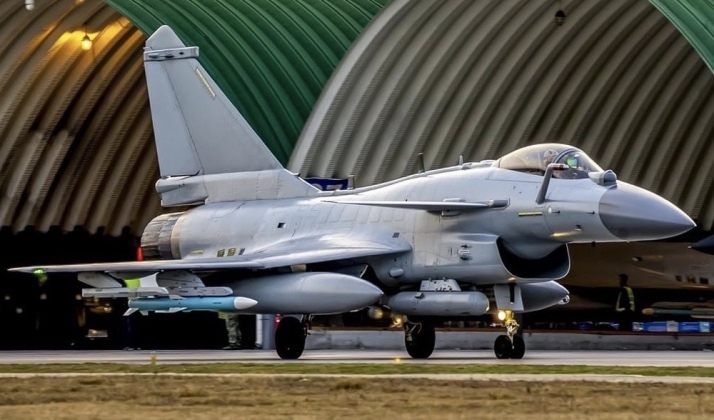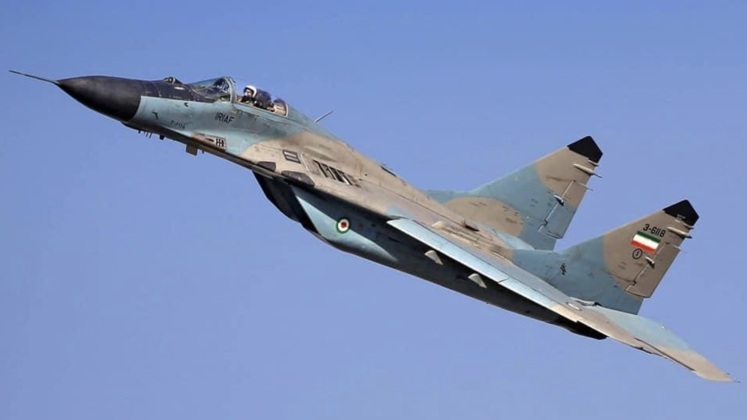News
Iran Just Chose Russia’s MiG-29 Over China’s J-10C: Four Reasons Why
Following reports that the Iranian Air Force had received its first new fighter aircraft in over 30 years, with MiG-29 having been delivered to Shiraz Air Base from Russia. Iran’s future fighter procurements have long been in widely speculated, and while Iranian officials in January confirmed that orders had been placed for new Russian Su-35 fighters, it was long expected that the country would also provide Chinese J-10Cs. Not only is the J-10C lighter than both the heavyweight Su-35 and the medium weight MiG-29, with its operational costs remaining significantly lower, but the aircraft’s sensors, data links, airframe materials and weaponry are also considerably more sophisticated. With the MiG-29 and J-10C coming from similar weight ranges and having comparable sustainment costs, the two were direct competitors to gain Iranian orders with the rationale for selecting the less sophisticated Russian aircraft remaining uncertain.

While the MiG-29 entered service 22 years before the J-10 in 1982, the newer Chinese aircraft also has the benefit of being incrementally modernised much faster, and by a defence sector that is considerably more sophisticated. For the Iranian Air Force, however, selection of the MiG-29 has four notable advantages over the J-10C. The first is that Iran will likely be able to procure considerable numbers of modernised MiG-29s without depleting its foreign currency reserves, as the country’s sizeable arms exports to Russia are expected to allow it to barter for the aircraft with the products of its own defence sector. The second is that the procurement cost of Russia’s hundreds of stored Soviet built MiG-29 airframes remains low, with the aircraft having been offered as outright aid in the past provided that clients finance the costs of modernisation. This could potentially allow the Iranian Air Force to provide four or more as many times as many modern fighters than it could if acquiring J-10Cs. Nevertheless, in the long term the MiGs are expected to be more costly as their sustainment costs are significantly higher than those of the J-10C, particles for Soviet built models which lack the more maintenance friendly designs of new models such as the MiG-29M.

A third major factor that is likely to have influenced the Iranian decision is Russia’s ability to very rapidly deliver MiG-29s. Although the modern MiG-29M can only be delivered at rates of well under 20 per year, the absence of any other known orders mean that the full production capacity at the Sokol Aviation Plant can be allocated to meeting Iranian orders. The J-10C, although in production on a scale of around 50 per year, is on order by the Chinese People’s Liberation Army Air Force, the Pakistan Air Force, and according to unconfirmed reports possibly the air forces of Egypt, Sudan and Uzbekistan as well. The discrepancy in delivery rates is further exacerbated when considering that Russia can deliver well over 100 MiG-29s from storage, likely very rapidly. A fourth major factor is that the Iranian Air Force already operates two squadrons’ worth of MiG-29A/UB fighters which were ordered in 1989, meaning maintenance of new aircraft will be highly familiar, and the fighters can be brought into service much more smoothly and rapidly than an entirely new aircraft. At a time when Iran continues to face an imminent threat of Western and Israeli attacks, the ability to receive and operationalise MiG-29s rapidly is a particularly important attraction. While old, when modernised with ‘4+ generation’ sensors, avionics and weaponry, such as Zhuk-ME or more advanced Zhuk-A/AM phased array radars and R-77M air-to-air missiles, the aircraft will be highly capable, and able to comfortably outperform the ageing F-15s and F-16s relied on by the Israeli Air Force.












